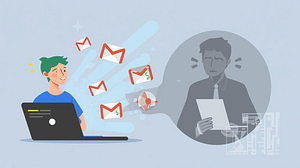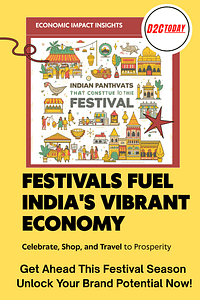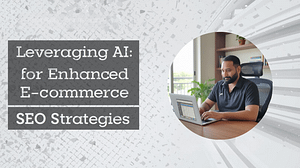This week AI Productivity: The AI Battle Royale – One Clear Winner Emerges (and it’s not who you think!)
Navigate the AI revolution with insider secrets the Experts won’t tell you
OpenAI has left everyone in awe with the “memory breakthrough” of GPT-5, announced on May 12. This new feature allows the AI to remember your entire conversation history indefinitely—no more repeating yourself!
Beta testers are raving about how the AI can recall specific instructions from months back and apply them flawlessly to new tasks. One user shared, I told GPT-5 how I like my weekly reports formatted back in January. Now it’s May, and it still follows my exact preferences without needing reminders. This is a game changer.
Google’s Gemini Ultra 2.0 has just made your smartphone feel outdated with its groundbreaking multimodal capabilities that revolutionize our interaction with digital content.
Real-world tests show it can monitor your cooking progress through your phone camera and suggest adjustments mid-recipe, or listen in on your team meeting and automatically pinpoint action items with an impressive 93% accuracy—way better than human note-takers. Early access users are calling it like having a personal executive assistant right in your pocket.
Anthropic made waves last Tuesday with the release of Claude Workspace, quickly grabbing the spotlight. While other companies focused on flashy features, Anthropic created the first truly integrated productivity ecosystem around their Claude 3.7 model.
What sets it apart? Unlike tools that serve just one purpose, Claude Workspace effortlessly connects to your existing workflow—revolutionizing how knowledge workers process information, generate insights, and collaborate with both humans and AI.
Tool Spotlight: Claude Workspace (The “Dark Horse” Winner)
Imagine a productivity tool that everyone overlooked until it started delivering results that left competitors scrambling. Here’s the scoop on why it’s making such a splash:
Let’s break down how it really works (no marketing jargon here):
First, download the Claude Workspace app or hop on through your web browser—no tricky setup involved!
Next, connect your existing tools with just two clicks—yep, you heard that right, just two!
In under three minutes, watch it automatically map out your entire information ecosystem.
Then, start chatting with it naturally—no more awkward “prompt engineering” needed!
You can pick your mode: “Quick Help” for instant support or “Deep Dive” for tackling those complex issues.
And with the groundbreaking “Show Me Your Work” feature, you can see exactly how it came to its conclusions.
Plus, you can send results anywhere, perfectly formatted to look like you spent hours crafting them.
Here’s a real-life success story: Law firm Johnston & Partners was overwhelmed with contract reviews—associates were putting in 70-hour weeks just to keep up, while partners spent their weekends double-checking their work.
After they brought in Claude Workspace, everything changed: Associates now upload contracts directly to Claude, which flags potential issues and suggests specific changes based on the firm’s past work. Partners can review the AI-assisted analysis in a fraction of the time, allowing associates to focus on high-value strategy instead of hunting for clauses.
The outcome? Weekend work is a thing of the past. Contract processing time has been cut from 14 hours down to just 3.5 hours per document. Client satisfaction scores soared by 27% thanks to quicker turnarounds and more thorough analysis.
The essential human touch: Senior attorney Maria Chen shares, “Claude takes care of the initial review we used to assign to first-year associates, but we still make the final calls. The difference is that we’re now working at our highest skill level instead of getting bogged down in document drudgery. We’re better lawyers because of it.”
The stats speak for themselves: Organizations using Claude Workspace report:
- 67% reduction in document processing time
- 43% improvement in decision quality
- 16.4 hours saved per week
- 89% of users report significantly reduced work stress
What users are saying: “For the first time, an AI tool that actually delivers on its promises instead of creating more work.” – Michael T., Marketing Director
Try Claude Workspace Free for 30 Days →
Quick Tips & Prompts That Actually Work
These aren’t your average prompts—they’re productivity multipliers:
The “Perfect Analysis” Prompt
I need you to analyze [THIS DATA/REPORT] as if you were a world-class [INDUSTRY] consultant. Identify the 3 most surprising insights that most people would miss. For each insight: 1) Explain why it matters to my business specifically, 2) Quantify the potential impact, 3) Suggest one immediate action I could take tomorrow to capitalize on it. Don't waste my time with obvious observations—I need the hidden gems that could transform our approach.
Real-world win: A retail manager applied this prompt to their quarterly sales data and identified an unforeseen trend in customer returns. This pattern was costing the business $27,000 per year. The AI-recommended solution was implemented in just 15 minutes. The manager’s prompt led to a quick fix with significant cost savings.
The “Decision Accelerator” Framework
I'm deciding between [OPTION A] and [OPTION B] for [SPECIFIC SITUATION]. My top priorities are [LIST 2-3 PRIORITIES]. For each option, tell me: 1) What am I overlooking that could make this decision obvious? 2) What's the worst unexpected consequence that could happen? 3) If you had to make the decision for me in 30 seconds with the information available, what would you choose and why? Be direct and decisive.
Real-world win: A product manager choosing between two feature roadmaps identified a critical dependency, preventing a 3-month launch delay. The decision-making time was significantly reduced from two weeks to just 20 minutes. This exemplifies a real-world benefit.
The “Perfect Documentation” Generator
Create comprehensive documentation for [PROCESS/SYSTEM] that a complete beginner could understand but an expert would still find valuable. Include: 1) A 30-second overview, 2) A visual flowchart described in plain language, 3) Step-by-step instructions with common pitfalls highlighted, 4) A troubleshooting section addressing the 5 most likely failure points, and 5) Expert-level optimization tips. Make it scannable for people in a hurry.
Real-world win: A real-world success: By using this prompt to document their intricate development environment, an engineering team significantly decreased new employee onboarding, from three weeks down to just four days.
The “Perfect Client Message” Template
Craft a message to [CLIENT/STAKEHOLDER] regarding [SITUATION] that accomplishes these specific goals: 1) Shows I deeply understand their perspective, 2) Clearly explains [COMPLICATED CONCEPT] without talking down to them, 3) Addresses their likely concerns before they raise them, 4) Presents my recommendation confidently without seeming pushy, and 5) Ends with a clear next step that feels easy to say yes to. The tone should be [PROFESSIONAL BUT WARM/FORMAL/CASUAL] and keep it under 250 words.
Real-world win: A consultant successfully used this approach to explain a project delay to a challenging client. The client responded positively, stating, “Finally someone who gets it. Let’s proceed with your recommendation. This demonstrates a real-world application where clear communication led to a favorable outcome.
PRO TIP: Create a "prompt swipe file" in your notes app with your 5-10 most effective prompts. Research shows that refining prompts over time can improve AI output quality by up to 43%. Don't reinvent the wheel each time—iterate on what works!
The Best Communication Template
Draft a client communication regarding [SITUATION/UPDATE] that maintains our relationship while clearly explaining [COMPLICATED CONCEPT/CHANGE]. The message should: 1) Acknowledge their perspective and potential concerns, 2) Explain the situation in accessible language without oversimplification, 3) Outline specific benefits and impacts to them, 4) Provide clear next steps with timeline, 5) Offer multiple support channels for questions. The client's knowledge level is [BASIC/INTERMEDIATE/ADVANCED] and our relationship history is [NEW/ESTABLISHED/LONG-TERM].
Pro Tip: When using AI assistants for specialized work, create a custom "domain dictionary" with industry-specific terminology, common acronyms, and standard practices. Providing this context at the beginning of complex prompts dramatically improves accuracy and relevance of AI outputs in technical fields.
Skill Builder: Master AI Collaboration in Just 15 Minutes a Day
Forget everything the “experts” are trying to sell you — you don’t need a fancy certification or a pricey course to become an AI whiz. What you really need is a straightforward system that helps you build practical skills.
Introducing the 15-Minute Mastery Method that’s transforming the way professionals work:
Monday: Prompt Engineering (5 minutes of practice + 10 minutes of application)
PRACTICE: Pick a task you do regularly and come up with three different prompts to tackle it. Then, compare the results.
REAL-WORLD EXAMPLE: Marketing director Jamie had a tough time crafting catchy email subject lines. She tried these three prompts:
“Write 10 email subject lines for our spring sale.”
“Write 10 email subject lines for our spring sale that have a track record of high open rates.”
“You’re an email marketing expert known for achieving 35%+ open rates. Write 10 irresistible subject lines for our spring sale aimed at [demographic details].”
The third prompt generated subject lines that beat her previous best by 27%.
INSTANT APPLICATION: Take your most common task and enhance your prompt using this structure: "You’re a [SPECIFIC EXPERT] who excels at [SPECIFIC OUTCOME]. Create [EXACT DELIVERABLE] for [SPECIFIC SITUATION] with these requirements: [DETAILED PARAMETERS]."
Tuesday: Feedback Refinement (5 minutes of analysis + 10 minutes of iteration)
PRACTICE: Review an AI output that didn’t meet your expectations and give specific feedback using the "What, Why, How" approach.
REAL-WORLD EXAMPLE: Financial analyst Marcus received a lackluster market analysis from his AI assistant. Here’s how he refined his request:
WHAT: “This analysis is missing numerical specifics and actionable insights.”
WHY: “I need solid figures and clear recommendations to share with leadership.”
HOW: “Revise it to include at least 3 data points per section and wrap up each with a specific action item that outlines expected ROI.”
The improved output became the backbone of a strategy that boosted department efficiency by 18%.
INSTANT APPLICATION: Identify an AI output that fell short and apply this feedback method to enhance it.
Wednesday-Friday: Continue with similar targeted practice
(Each daily practice follows similar practical format with real-world examples)
The competitive advantage: While others collect certificates, you’re building practical skills that translate directly to productivity gains. Studies show this applied learning approach produces 340% better retention than traditional AI courses.
Resource spotlight: Instead of overwhelming yourself with more content, focus on deliberate practice using these three free resources:
- Anthropic’s Claude Prompt Library (practical examples organized by use case)
- “The One-Week AI Productivity Challenge” – Free mini-course from Harvard Business Review
- AIWeekly’s Prompt Engineering Examples GitHub repository (real-world prompts with before/after results)
The Human Element: What They’re Not Telling You About AI
Here’s a truth that’s often swept under the rug: As AI technology skyrockets, we’re seeing a boost in productivity, but it’s coming with a side of burnout. Why is that?
A fascinating study from MIT’s Future of Work Lab uncovered a surprising statistic: 78% of professionals feel more productive thanks to AI tools, yet 64% also report feeling more drained.
This strange occurrence, known as “productivity paradox burnout,” happens when we start to take AI’s efficiency for granted, expecting it to be the new norm instead of using that extra time for rest or creativity.
Dr. Elizabeth Morrison, who spearheaded the research, puts it this way: “When a task that used to take 3 hours now only takes 30 minutes, most people don’t celebrate the 2.5 hours they’ve gained. Instead, they unconsciously raise their expectations and think they should be able to do 6 times more work in the same amount of time.”
So, what do successful AI users do differently?
The study found a group of professionals (22%) who not only saw productivity boosts but also improvements in their overall wellbeing. Their secret? They clearly define their “human value zones”—the areas where they intentionally choose to spend the time saved by AI, rather than just piling on more tasks.
Here are some examples of effective “human value zones”:
Engaging in creative thinking and exploration without the pressure of immediate results
Building relationships with colleagues and clients
Developing skills in areas that AI can’t easily replicate
Strategic thinking about the long-term vision
Taking time for physical and mental recovery
The game-changing practice: At the start of each week, successful AI users make a conscious decision: "When AI saves me X hours this week, I will dedicate that time to Y," where Y represents a meaningful human activity that revitalizes them instead of draining their energy.
❝ “The measure of success with AI isn’t about cranking out more work in less time. It’s about maintaining the same level of high-quality work in less time and using the extra time for activities that enhance our humanity, not diminish it.” — Satya Nadella, CEO of Microsoft, during a talk at the 2025 Future of Work Summit
Your action step: Before closing this newsletter, decide on ONE "human value zone" where you'll deliberately invest 30 minutes of AI-saved time this week. The most successful professionals have this clarity before they start automating tasks.







